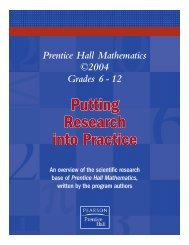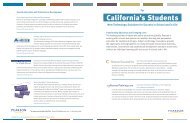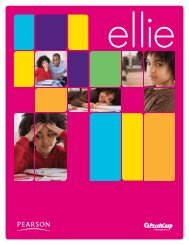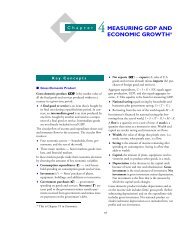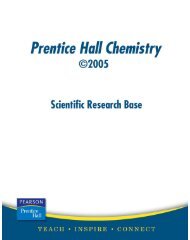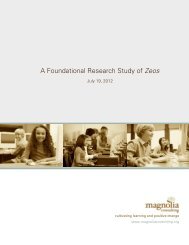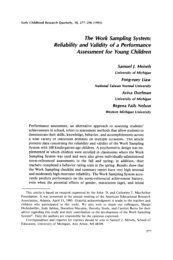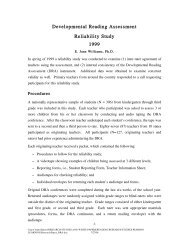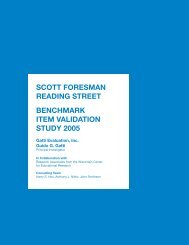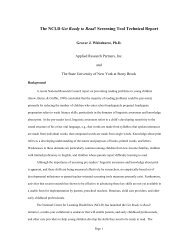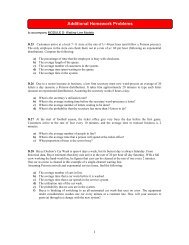Pearson Successmaker Math Efficacy Study 2009-10 Final Report
Pearson Successmaker Math Efficacy Study 2009-10 Final Report
Pearson Successmaker Math Efficacy Study 2009-10 Final Report
Create successful ePaper yourself
Turn your PDF publications into a flip-book with our unique Google optimized e-Paper software.
SuccessMaker <strong>Math</strong> RCT Gatti Evaluation Inc. 9-15-<strong>10</strong>standard in English Language Arts was 74%, which is the same percentage as the statewideresults. The student/teacher ratio is approximately 17 to 1.A total of six teachers participated in the SuccessMaker study with two 3 rd and two 5 th gradeclassrooms randomly assigned to use the program. None of these teachers were new to theschool or district. The district adopted a widely published elementary basal mathematicscurriculum with a late copyright date. Five out of the six teachers report receiving training onthis curriculum, while one teacher has received no training. Teachers have followed thiscurriculum for an average of 6 years. All teachers primarily use the district adopted programwith some supplementation. This supplementation includes a paper-based math facts program,which is used by all teachers at the school. Teachers use a variety of other materials (i.e.,additional worksheets, teacher-created activities) to supplement the rest of their instruction.Daily math blocks range from 45 minutes to one hour and <strong>10</strong> minutes. All of the teachers haveadditional support in their classroom during their math block. Five out of six teachers have helpin the form of a teacher’s aid, and two of these teachers also have a student teacher. The sixthteacher receives support from a paraprofessional. Most teachers adhere to a math teachingphilosophy that combines skills-based and discovery-based methods, though one 3 rd gradeteacher prefers purely skills-based teaching methods. Teachers conduct math lessons usingwhole group instruction about 76% of the time.Only one teacher frequently used leveled instruction for math lessons, while one other teacherused this strategy occasionally. All teachers used cooperative learning to some degree for mathinstruction, though infrequently for most. All but one teacher reported using centers. Teachersalso incorporate some technology use into the classroom during math instruction. All teachersfrequently use interactive white boards and occasionally use educational computer games. Allbut two use instructional websites weekly.Those teachers randomly assigned to use the SuccessMaker <strong>Math</strong> program were trainedapproximately three months after school began on November 13 th . These teachers also receivedan additional training in January. Students completed baseline testing the third week inNovember and completed end-of-year testing the week of May <strong>10</strong> th . Students’ last week usingthe program was the week of May 21 st .The SuccessMaker teachers took their students to use the program in the computer lab two days aweek for 30 minutes with the exception of one 5 th grade teacher that took their students to the labfour times a week for fifteen minute sessions. Teachers used the program in addition to theirblock of mathematics instruction. The median 3 rd grade student used the math programapproximately 18 hours, attempting 48 exercises every thirty minutes with a success rate of 67%.The median 5 th grade student used the math program approximately 17 hours, attempting 50exercises every thirty minutes with a success rate of 66%.Kansas DistrictThe participating Kansas schools reside in a large city, which in <strong>2009</strong> had a population of morethan <strong>10</strong>0,000. The median household income is approximately $40,000 indicating a middle classcommunity. Two schools, one elementary school and one middle school participated in theSuccessMaker study from this Kansas district.- 25 -



